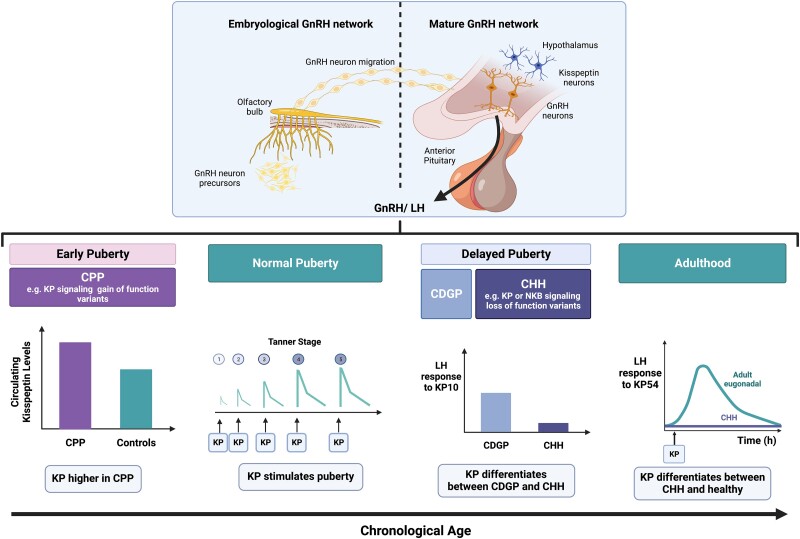Figure 4.
Role of KP in disorders of puberty. Puberty is triggered by the pulsatile secretion of GnRH and subsequent downstream activation of the HPG reproductive axis. The pulsatile secretion of GnRH requires adequate development and migration of GnRH neurons from the olfactory bulb to the hypothalamus. The HPG axis is transiently activated at 2 distinct phases: during early developmental life, termed “mini puberty,” and at the onset of puberty. KP stimulates an LH response during the later stages of puberty (Tanner stage 5) thus suggesting KISS1R sensitivity on GnRH neurons develops during the later part of puberty. KISS1 gain-in-function variants can lead to premature activation of the HPG axis resulting in early central precocious puberty (CPP). KP levels are increased in CPP vs age-matched healthy controls and thus KP has potential in aiding in the diagnosis of early puberty. KISS1 loss-of-function variants cause aberrations in GnRH neuronal development or migration and impair GnRH secretion resulting in congenital hypogonadotropic hypogonadism (CHH) and delayed puberty. Constitutional delay of growth and puberty (CDGP) is another common cause of delayed puberty and can be challenging to accurately differentiate from CHH. KP, a potent stimulator of GnRH and LH release, induces differential responses in CDGP (increased LH) and CHH (absent/reduced LH) and thus can aid in the diagnosis of delayed puberty. CDGP, constitutional delay of growth and puberty; CHH, congenital hypogonadotropic hypogonadism; CPP, central precocious puberty; GnRH, gonadotropin-releasing hormone; HPG, hypothalamic-pituitary-gonadal; KP, kisspeptin; LH, luteinizing hormone. Figure created with BioRender.com.

